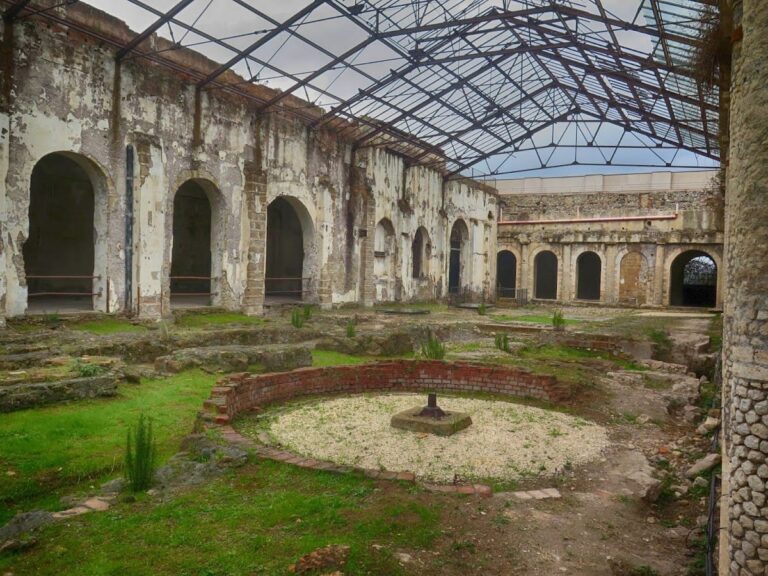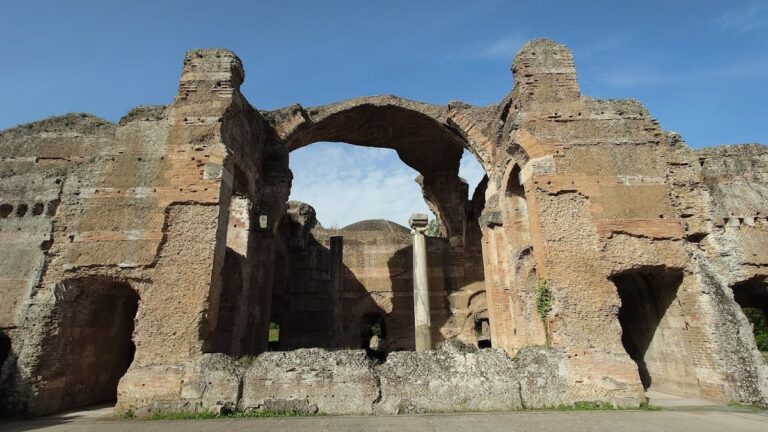Rocca Pia: A 15th-Century Papal Fortress in Tivoli, Italy
Visitor Information
Google Rating: 4.4
Popularity: Low
Google Maps: View on Google Maps
Country: Italy
Civilization: Unclassified
Remains: Military
History
Rocca Pia is a fortress located in Tivoli, Italy, originally constructed by the Papal States in the second half of the 15th century. Its creation marked a change in the political landscape of Tivoli, securing the city under papal control during a period of ongoing factional conflicts throughout central Italy.
Work on Rocca Pia began in 1458 and was completed by 1461 under the order of Pope Pius II, born Enea Silvio Piccolomini. The fortress was built to ensure the loyalty of Tivoli, which until then had maintained a degree of communal independence amidst disputes involving Guelf and Ghibelline factions and the powerful Colonna and Orsini families. The construction aimed to stamp out local self-governance and solidify papal authority over the city and surrounding region.
The architects responsible for the fortress are believed to have been Niccolò and Varrone, Florentine students of the renowned architect Filarete. Giovanni Stefano da Landriano directed the works while master builder Manfredino led the construction. Financial matters were overseen by Fra Giacomo da Gaeta. The fortress was erected on the site of an ancient Roman amphitheater, called the Amphitheatrum Bleso, which was demolished to both prevent it from being used by enemies and to recycle its stones.
Additional features were added approximately fifty years later, including two smaller circular towers likely commissioned by Pope Alexander VI Borgia, with some sources considering an earlier possibility of Pope Sixtus IV. Minor modifications occurred under Pope Julius II during the early 1500s, reflecting evolving military needs.
In 1522, Pope Adrian VI abolished the municipal government of Tivoli, ending local political structures for almost 400 years. During this period, the fortress served as a garrison for papal troops. Significantly, in 1539, Pope Paul III stayed at Rocca Pia and received from Ignatius of Loyola the first officially approved text founding the Society of Jesus.
In the late 18th century, forces from France and Austria occupied the fortress amidst wider European conflicts. During the Napoleonic era, Rocca Pia was converted first into military barracks and later into a prison, a function it maintained until 1960. After many years of neglect, restoration work began in the early 2000s, leading to the fortress reopening under the management of Tivoli’s local government in December 2018.
Remains
Rocca Pia is a substantial fortress constructed as a large square complex made primarily from local volcanic tuff, chosen for its ability to absorb the impact of cannon fire, demonstrating adaptation to gunpowder weaponry emerging in the late 15th century. Its design consists of four circular towers connected by tall curtain walls that enclose a central courtyard.
The largest tower, positioned to face outward from the city, rises to 36.5 meters with a diameter of 13.2 meters. This tower contains six stacked rooms and thick walls measuring up to 3.9 meters wide, highlighting its defensive importance. The second largest tower reaches 25.5 meters in height and has a diameter of 10 meters, housing five floors behind walls approximately 2.9 to 3 meters thick.
Two smaller towers, added some fifty years after the original construction under Pope Alexander VI, stand 18 meters tall, each with three floors and walls about 2 meters thick. Unlike the larger towers which look outward, these smaller ones face inward towards the city and open onto the inner courtyard.
The tops of the four towers retain their original Guelph-style crenellations—those distinctive notched battlements—while the curtain walls themselves no longer have their original merlons (the upright sections of the battlements). However, the walls are crowned with deep corbelled arches in a medieval style, contributing to the structure’s defensive capabilities.
The fortress is built on a steeply sloping base known as a “base a scarpa,” designed to strengthen the walls against attack. Numerous embrasures (openings) for firearms are integrated into the walls, reflecting the importance of gunpowder weapons during the fortress’s period of use.
Entrances were carefully fortified; the main portal on the northern side is protected by a foregate flanked by two square towers. Access was once gained via a drawbridge on the eastern side that now stands sealed. Above the entrance, the Piccolomini family coat of arms is prominently displayed alongside a Latin inscription commemorating Pope Pius II’s foundation of the fortress.
The layout of Rocca Pia was strategically planned to control important access routes into Tivoli, including the Via Tiburtina, while also securing the area immediately outside the historic city walls to prevent uprisings or infiltration. The fortress has undergone restoration in recent decades, preserving its imposing structure as a testament to its historical role and architectural adaptation over time.









